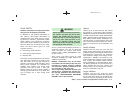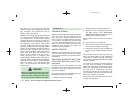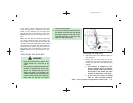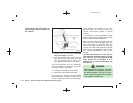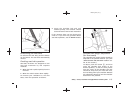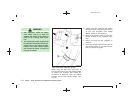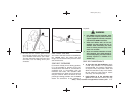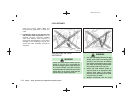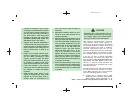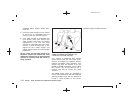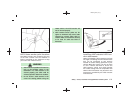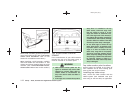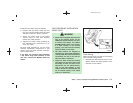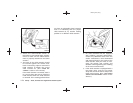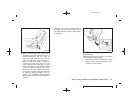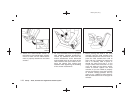
Black plate (35,1)
Model "S51-D" EDITED: 2008/ 3/ 26
restraint be installed in the rear seat.
According to accident statistics, children
are safer when properly restrained in
the rear seat than in the front seat. If
you must install a front facing child
restraint in the front seat, see “CHILD
RESTRAINT INSTALLATION USING THE
SEAT BELTS” later in this section.
. Improper use or improper installation of
a child restraint can increase the risk or
severity of injury for both the child and
other occupants of the vehicle and can
lead to serious injury or death in an
accident.
. Follow all of the child restraint manu-
facturer’s instructions for installation
anduse.Whenpurchasingachild
restraint, be sure to select one which
will fit your child and vehicle. It may not
be possible to properly install some
types of child restraints in your vehicle.
. If the child restraint is not anchored
properly, the risk of a child being injured
in a collision or a sudden stop greatly
increases.
. Child restraint anchor points are de-
signed to withstand only those loads
imposed by correctly fitted child re-
straints. Under no circumstances are
they to be used for adult seat belts or
harnesses.
. Adjustable seatbacks should be posi-
tioned to fit the child restraint, but as
upright as possible.
. After attaching the child restraint, test it
before you place the child in it. Push it
from side to side while holding the seat
near the LATCH attachment or by the
seat belt path. Try to tug it forward and
check to see if the belt holds the
restraint in place. The child restraint
should not move more than 1 in (25
mm). If the restraint is not secure,
tighten the belt as necessary, or put
the restraint in another seat and test it
again. You may need to try a different
child restraint. Not all child restraints fit
in all types of vehicles.
. When your child restraint is not in use,
keep it secured with the LATCH System
or a seat belt to prevent it from being
thrown around in case of a sudden stop
or accident.
CAUTION
Remember that a child restraint left in a
closed vehicle can become very hot. Check
the seating surface and buckles before
placing your child in the child restraint.
This vehicle is equipped with a universal
child restraint lower anchor system, re-
ferred to as the Lower Anchors and Tethers
for CHildren System or LATCH. Some child
restraints include two rigid or webbing-
mounted attachments that can be con-
nected to these lower anchors. For details,
see “Lower Anchors and Tethers for CHil-
dren SYSTEM (LATCH)” later in this section.
If you do not have a LATCH compatible
child restraint, the vehicle seat belts can
be used. (See “CHILD RESTRAINT INSTALLA-
TION USING THE SEAT BELTS” later in this
section.) In general, child restraints are
also designed to be installed with a lap/
shoulder seat belt.
Several manufacturers offer child restraints
for infants and small children of various
sizes. When selecting any child restraint,
keep the following points in mind:
. Choose only a restraint with a label
certifying that it complies with Federal
Motor Vehicle Safety Standard 213 or
Safety — Seats, seat belts and supplemental restraint system 1-19



